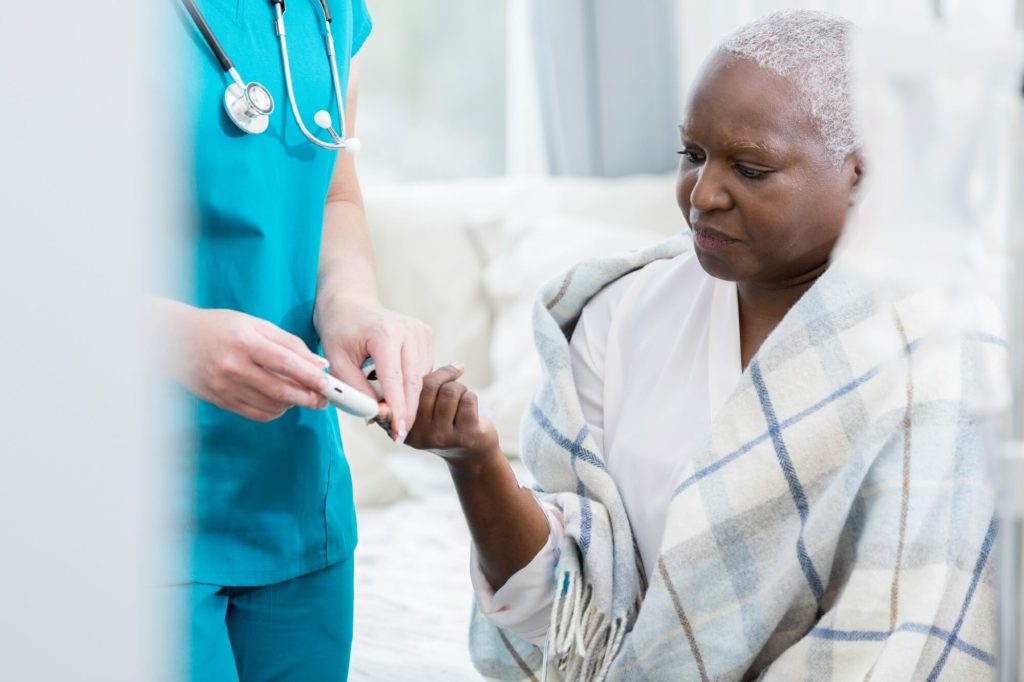In developing countries, depressive symptoms are common in patients with type 1 diabetes (T1D) and type 2 diabetes (T2D), particularly those in high-risk groups, according to research results published in Diabetes Care.
To evaluate both the prevalence and associated risk factors of depression and depressive symptoms in people with T1D and T2D, researchers evaluated data from the International Diabetes Management Practices Study — a multicenter, cross-sectional study of adults with T1D or T2D — collected during 2011.
These data were collected during a 2-week cross-sectional survey period and included information on routine care practices and patient profiles. Survey participants also included 879 physicians in countries across Africa, Eurasia, Latin America, the Middle East, and South Asia.
Continue Reading
Complete data from the 9-item Patient Health Questionnaire (PHQ-9) were collected from 9865 eligible participants, 2280 of whom had T1D and 7585 of whom had T2D. Of those with T2D, 4729 patients were treated with oral glucose-lowering drugs (OGLDs) alone, 1892 were treated with OGLDs plus insulin, and 964 were treated with insulin alone.
In the T2D group, patients were generally older than those with T1D; both groups had similar percentages of women (52.5% vs 52.0% to 54.9% in the T1D vs T2D subgroups). Mean disease duration for patients with T1D was 11.8±9.2 years and ranged from 6.8±6.1 to 12.6±8.6 years in patients with T2D. In patients with T2D, glycated hemoglobin <7% (<53 mmol/mol) was achieved by 41.1% in the OGLD-only subgroup, 16.5% in the OLGD-plus-insulin subgroup, and 18.5% in the insulin-only subgroup. Patients in the T2D group were most likely to have obesity, hypertension, and/or dyslipidemia.
Depressive symptoms (PHQ-9 score ≥5; 95% CI, 28.8-32.6) were reported by 30.7% of patients in the T1D group. Symptoms were mild in 20.4% of patients, moderate in 8.9% of patients, and severe in 1.3% of patients. In the T2D group, 33.1% of patients reported depressive symptoms (95% CI, 32.1-34.2); 22.1% were mild, 9.9% were moderate, and 1.2% were severe. A higher proportion of patients with T2D treated with insulin reported the presence of depressive symptoms vs those treated with OGLDs only (36.6% in OGLD-plus-insulin and 46.7% in insulin-only vs 29% in OGLD-only subgroups).
Patients in Eurasia (Georgia, Kazakhstan, Russia, Ukraine, and Uzbekistan) demonstrated the highest proportion for any depressive symptoms compared with all other geographic regions. In Eurasia and South Asia (India, Pakistan, and Turkey), specifically, approximately 20% of insulin-treated patients reported a high PHQ-9 score suggesting major depression.
White people, women, and patients with either micro- or macrovascular complications were more likely to experience depressive symptoms, and in both diabetes groups, patients with depressive symptoms had longer durations of diabetes and were more likely to have poor glycemic control, hypertension, and dyslipidemia.
Following adjustment for confounders, both micro- and macrovascular complications and female sex were identified as independent risk factors for depressive symptoms in both T1D and T2D. In T1D, poor glycemic control and residing in a rural area were additional independent risk factors. In the T2D OGLD-only subgroup, poor glycemic control and older age were independent risk factors for depressive symptoms.
Study limitations include those inherent to observational research including selection bias and confounding factors, a lack of prospective and interventional data and comparative group, and differences in treatment subgroup sample sizes.
“Using real-world data collected from developing countries, we confirmed similarly high proportions of patients with type 1 or type 2 diabetes with mild and moderate depressive symptoms as observed in developed countries, especially in women and those with low socioeconomic status,” the researchers wrote. “These results add to the body of evidence that supports the need to perform routine screening for depressive symptoms in all patients with type 1 or type 2 diabetes.”
“Patients reporting major depressive symptoms should be referred for psychologic or psychiatric evaluation,” they concluded. “This type of multidisciplinary approach may help reduce the double burden of diabetes and depression.”
Disclosure: This research was supported by Sanofi. Please see the original reference for a full list of disclosures.
Reference
Aschner P, Gagliardino JJ, Ilkova H, et al. High prevalence of depressive symptoms in patients with type 1 and type 2 diabetes in developing countries: results from the International Diabetes Management Practices Study. Diabetes Care. 2021;44(5):1100-1107. doi:10.2337/dc20-2003
